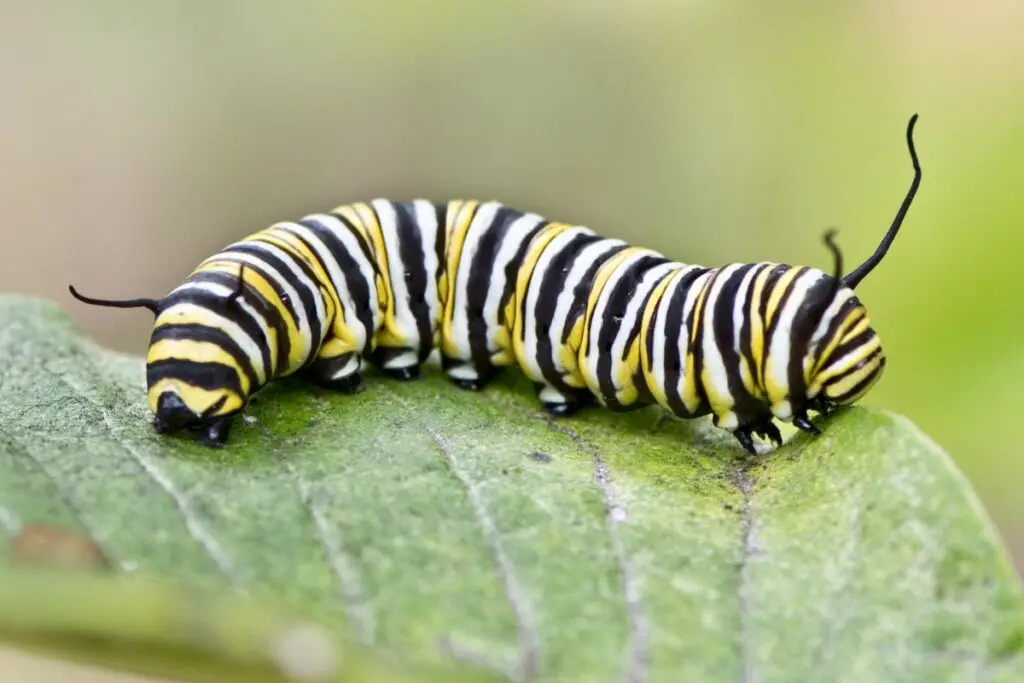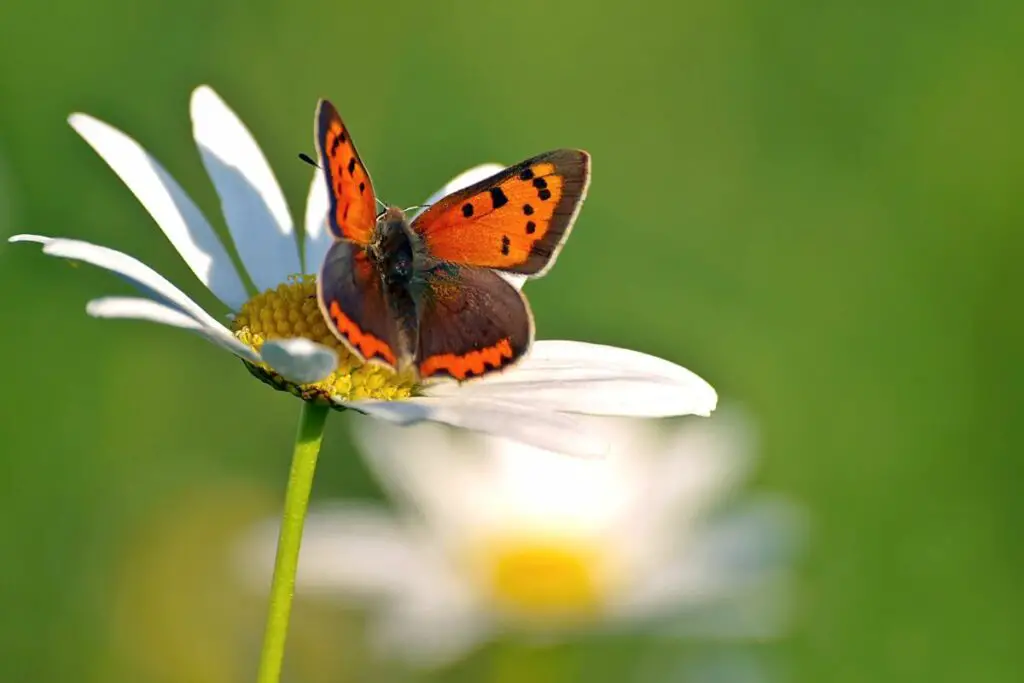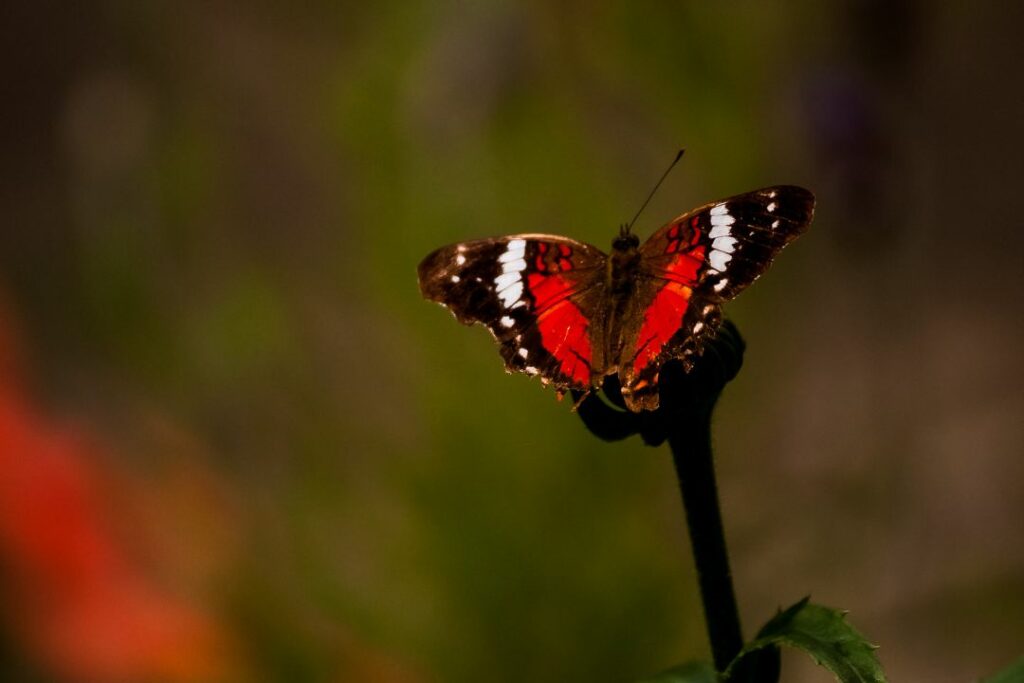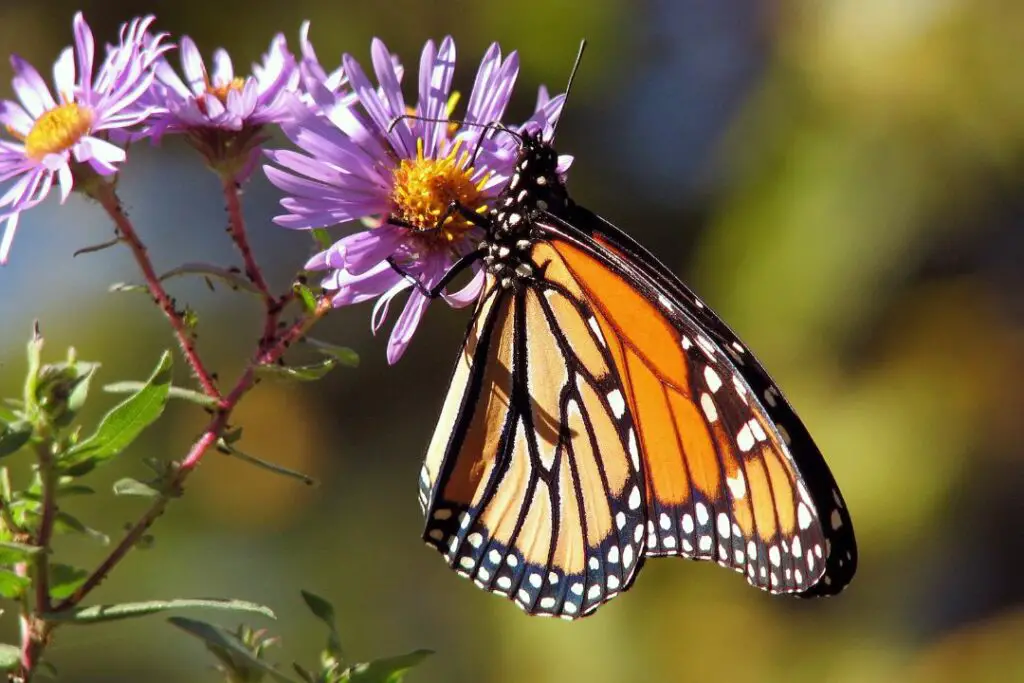Yes, caterpillars have a ferocious appetite, and they poo all the time. Their excrement appears as small pellets called frass.
Depending on the caterpillar’s diet, these little pellets can vary in colour from bright green to very dark brown.
But did you know they have other ingenious uses for their waste?
Using Poo As A Defence Mechanism
Some species of caterpillars, in their unassuming brilliance, use their own poo as a tool for survival.
By flinging their faecal matter, these critters create an unpleasant environment for would-be predators, deterred by the scent and presence of faeces.
A real-world example is the Green Triangle butterfly caterpillar, found in Australia.
When threatened, they react by ejecting their poo at high speeds.
The sudden movement and the presence of the poo can startle or confuse predators like birds, giving the insect crucial moments to escape.
But what about butterflies? Find out more in our short read: do butterflies poop?
How Do Caterpillars Poo?
As they consume large amounts of leaves, their bodies absorb nutrients and water efficiently.
The indigestible parts of plants, like cellulose from the cell walls, are compacted into waste material.
This waste, known as frass, is excreted through the caterpillar’s anus at the rear end of its body.
And some caterpillars eat food that would be toxic for most other animals.
Monarch butterfly caterpillars feed almost exclusively on milkweed that contains high concentrations of toxic compounds.
But their digestive system extracts the nutrients from these tough leaves and deals with the toxins.
All this eating is an absolute necessity if our hungry caterpillar wants to get all the energy stores it needs to power its transformation into a moth or butterfly.
How Does Caterpillar Poop Fit Into The Environment?
Caterpillar poo, while seemingly insignificant, plays a vital role in the circle of life.
It contributes to soil fertility when frass, rich in nutrients, decomposes and enriches the soil as a natural fertiliser.
This returns vital nutrients to the ecosystem and promotes healthy plant growth, ensuring that future caterpillars have plenty to feed on.
The Caterpillar Daily Diet
Caterpillars tend to fall into one of two categories: generalists and specialists.
Specialists feed exclusively on specific types of leaves. Two interesting characters would be:
- Pine Processionary Caterpillars (Thaumetopoea pityocampa): These guys feed specifically on the needles of pine trees.
- Gum Moth Caterpillars: Native to Australia, they’ve evolved to digest the tough leaves of eucalyptus trees containing toxic compounds that would kill most other animals.
Generalists are nowhere near as picky with their diets, feasting on all sorts of plants as they gather the energy required to transform into a butterfly or moth.
- Cabbage White Caterpillar (Pieris rapae): Known for their broad diet, these guys love any plants in the Brassicaceae family, which includes cabbage, kale, and mustard plants.
- Gypsy Moth Caterpillar (Lymantria dispar): These guys consume the foliage of a vast array of deciduous and evergreen trees and shrubs. This includes oak, birch, poplar, and willow.




